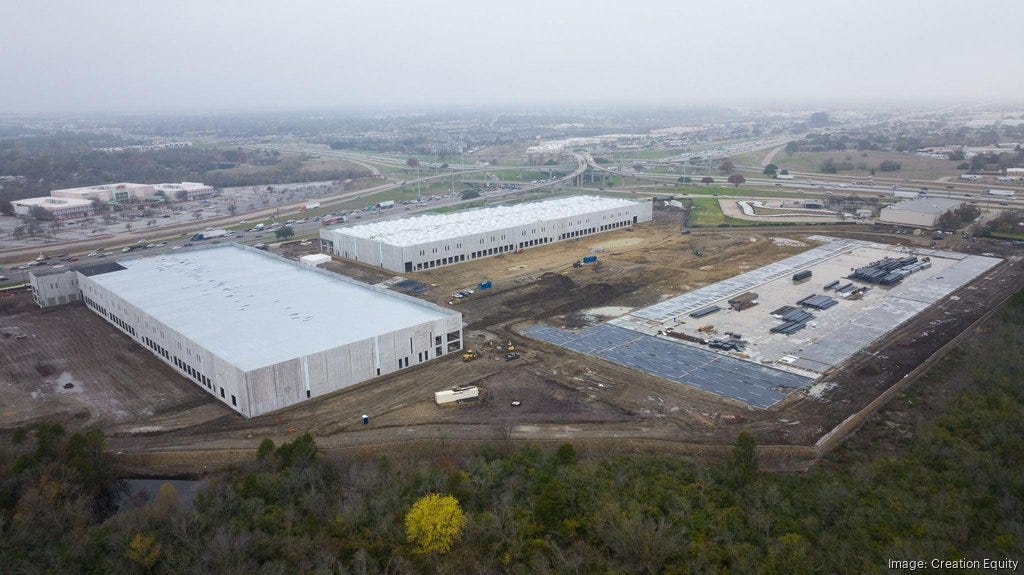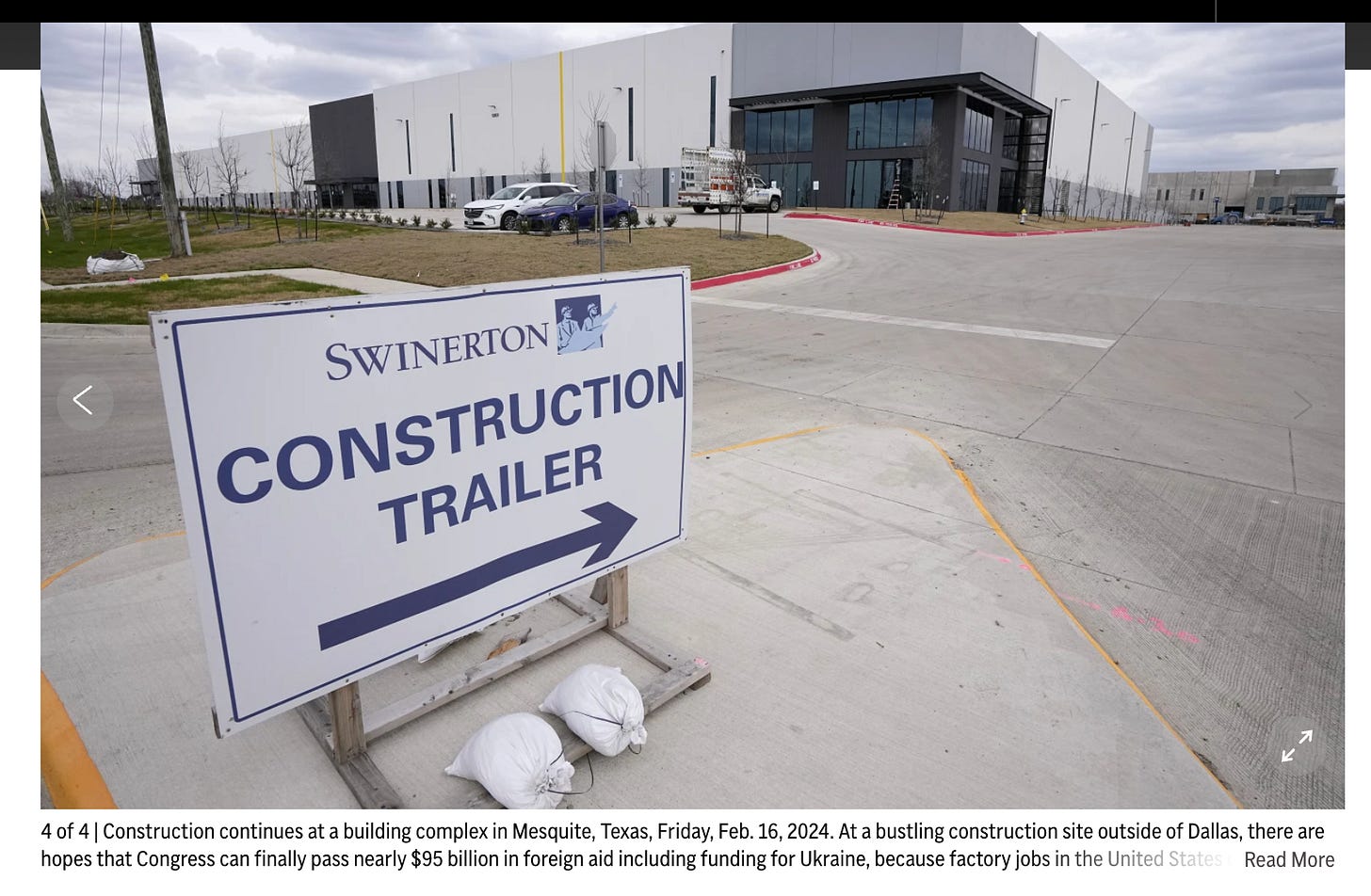Weapons of the Weak #6: 155mm Shells, Made in America*
“Without support from our NATO ally Turkey, this facility would be empty.”
Last week, the Army opened a new ammunition plant in Mesquite, TX. Though little noticed, this was a milestone in the history of Bidenomics. The effect of CHIPS and IRA can be seen clearly in spending on factory construction, but it may be years before any new semiconductors are actually produced. But in Mesquite, the new industrial policy has already created new productive capacity.1 It was just as Mitch McConnell had promised: extraordinary military appropriations will “create lots and lots of jobs [for] American workers producing cutting edge equipment.”
But the American achievement came with a big asterisk. “Without support from our NATO ally Turkey,” said Army Secretary Christine Wormuth, “this facility would be empty.” She was not exaggerating. General Dynamics had subcontracted with Repkon, a metalworking-machine tool company which offers capital equipment packaged for “turnkey” delivery. Three complete production lines were crated and shipped from Turkey, to be installed by Turkish workers. Here was the long arc of the Truman doctrine. Almost eight decades after US military assistance to Turkey inaugurated a new world order, military assistance was flowing back the other way, from the nation with NATO’s second largest military to the nation with NATO’s largest military.

If we have entered a post-neoliberal era, the US has not broken its dependence on foreign manufacturing. The Repkon-General Dynamics relationship allows us to glimpse one possible form of post-neoliberal globalization. In place of Thomas Friedman’s “Golden Arches theory of peace,” the new globalism might be premised on frankly opportunistic partnerships between geopolitically aggressive states—hidden, when necessary, under sheltering rhetoric about domestic stimulus.

Before we get into Repkon: what did General Dynamics actually contribute here?
Sure, the “facility would be empty” without Turkish equipment. But at least General Dynamics, the prime contractor whose name is on the building, constructed the facility.2 Or did they? That was definitely the plan at one point. The initial task order awarded in Nov 2022 envisioned GD “build[ing] a new 155mm artillery metal parts production line in Garland, Texas.” In Jan 2023, the Army still said it was “under contract with [GD] to stand up another plant…in Garland.” In April 2023, the WSJ was still under the impression that GD was “outfitting its plant in Garland, Texas, with new machinery to support three shifts producing 155mm shells.”
Around the first quarter of 2023, there was a change of plans. In April, General Dynamics announced that they had “selected a 240,011-square-foot building in the Mesquite 635 industrial park” (emphasis added). In May, a corporate representative told the Mesquite city council that “the Universal Artillery Production Line has outgrown” the Garland campus. The city council gave him “the go-ahead to locate the weapons parts plant in a business park near Interstate 635.”

As these quotes indicate, the business park was planned, and largely built, before the wars and without any involvement by General Dynamics. The city of Mesquite greenlit the development, then budgeted at $60 million, in 2021. Construction began in March 2022, on spec (marketing documents indicate that the developers imagined logistics-related clients, given the proximity to two major highways).

Photos from around April 2023 (above) show two buildings substantially complete, and the third basically unstarted. According to legal filings, construction on Building 3 began in July 2023, i.e. after General Dynamics had entered the picture. The same document indicates that this phase—categorized as “Renovation/Alteration”— would cost $80 million, although the initial budget for all three buildings had been $50 million. By the time construction was reported completed in Nov 2023, Frito-Lay was also on board as a tenant.3 Subsequent modifications—apparently to the trucking bays, and perhaps elsewhere—made it possible for AP to claim that “a bustling construction site” was still in progress in Feb 2024 (below). This work was performed by another subcontractor, Swinerton. In these photos, there are also still signs up soliciting tenants for Mesquite 365.

The plant is said to have cost the Army over $500 million, half of the annual budget for renovation of the government-owned industrial base. It would be interesting to know how much went to Repkon, how much to the developers of Mesquite 365, how much to Swinerton, and how much to the prime contractor. In time, the Army will also pay billions of dollars to procure the ammunition as it comes off the line, but at least in that process General Dynamics can take credit for managing production.
The facts here may be wrong in some important regard, since I have not set foot in Mesquite or talked to anyone familiar with the situation. But if they’re basically correct, then General Dynamics is not really responsible for the plant, the equipment, or the installation of the equipment in the plant. They did probably fund completion of the largest of the three buildings, as well as modifications to the existing campus. Is it too cynical to suspect that their basic job here was to create the appearance of a large US-owned corporation building a factory (with American workers) in 10 months?
Keep reading with a 7-day free trial
Subscribe to Origins of Our Time to keep reading this post and get 7 days of free access to the full post archives.




